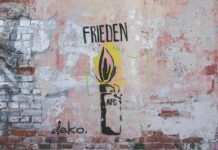Beware, Weimar, Dessau, Berlin! Now, Frankfurt has come and presented himself as a true future metropolis of the inter-war years. As the place where not just thought, taught, and designed, but mainly because artists, architects, designers, citizens, politicians and businessmen wanted the same thing: the new city. “When the Bauhaus was the Academy of the Modern age, Frankfurt was his workshop,” says Matthias WagnerK, the Director of Frankfurt’s Museum of Applied art.
Ursula Scheer
editor in the features section.
F. A. Z.
The exhibition “Modern on Main” is the first contribution of the city to the Bauhaus-the year of jubilee: you are Looking at the German architecture Museum and the Historical Museum will follow in the coming months. The kick-off is postulated full of self-consciousness: the end of the roaring twenties “has established itself in Frankfurt am Main as a the Bauhaus equivalent, world famous center of the avant-garde” – with a variety of relations to Bauhaus teaching.
back things from the point of view of the old city, which recorded the beginning of the twentieth century, a modernization thrust, to the center, is instead mesmerized on the founding of Walter Gropius rigid, the concern.
Social and practical instead of ostentatious and representative
More than five hundred, mostly from private lenders provided exhibits that the “Modern had to offer on the Main” far more than Beautiful to cook in the famous Frankfurt kitchen by Margarete Lihotzky, when Paul Renner designed the Futura font and the municipal buildings of the urban planning and architect Ernst May.
Just because you was interested in the state of Hesse less to create iconic objects or prestige architecture, but rather practical and social thought, was not less progressive. The goal is to reveal the views of the “New Frankfurt” and the environment.
had Coined the term Ludwig Landmann, the engine of the “renewal program” for the city as an economic development officer and mayor. His first Coup was the re-opening of the Frankfurt trade fair in the year 1919. Reason enough for the curators Grit Weber, Annika Sellmann, Klaus Klemp and Matthias WagnerK to make this year, the Bauhaus Foundation year, to the starting point of their Look, although the “New Frankfurt” in the proper sense took until the mid-twenties shape.
1930, it showed signs of disintegration, as Ernst May went to the Soviet Union. Would he become as famous as Gropius, when he had emigrated to the United States?
By Virtual Reality in the interwar period
The exhibition spans the arch until the seizure of power in 1933, and thus follows the narrative pattern of the democratic avant-garde, which was liquidated by the Nazis. Continuities in the time of the dictatorship and, moreover, they are not followed. She wants to remember the “world open, objective and future-joyful spirit” of the city, the farmer implored.




